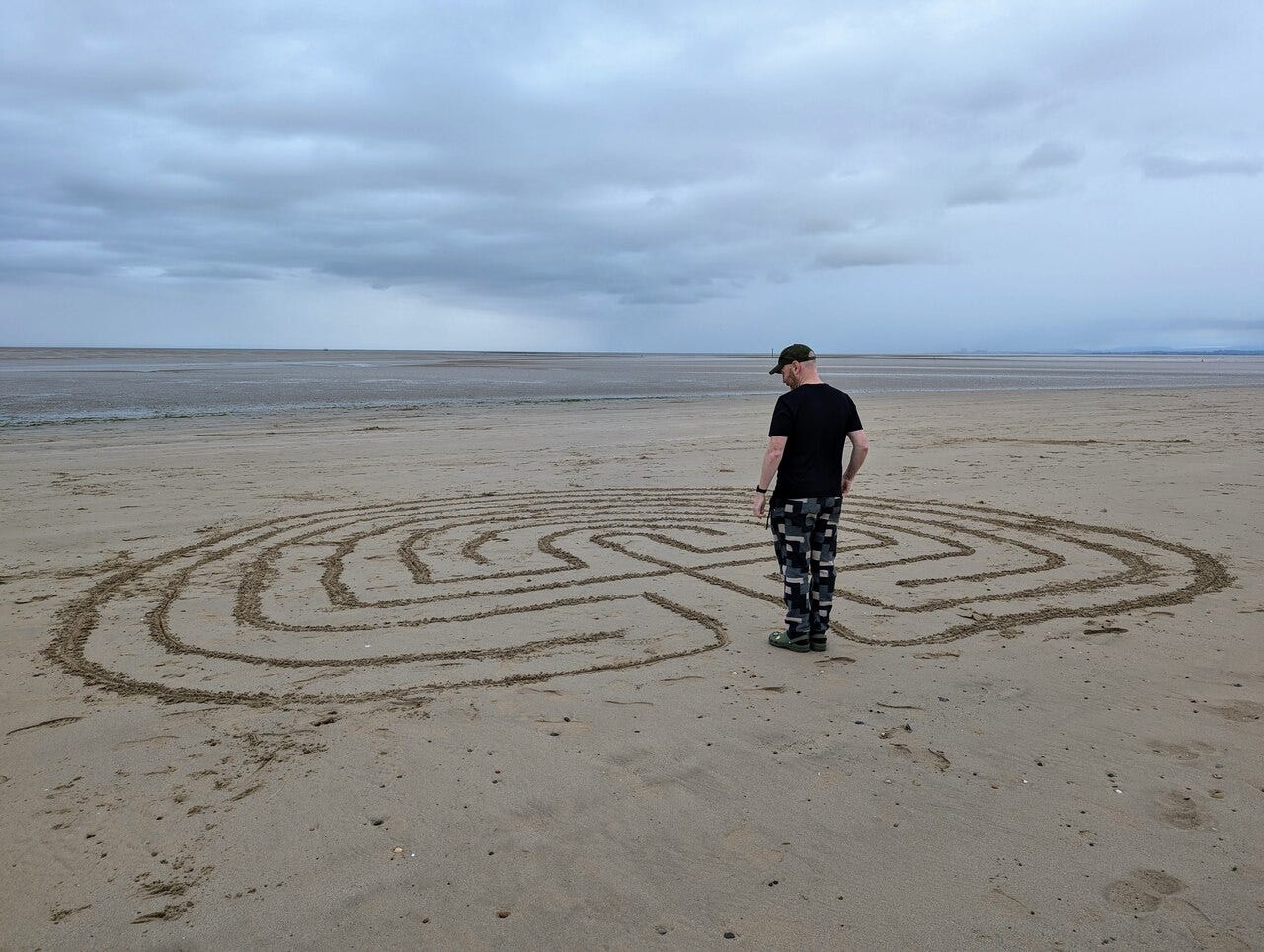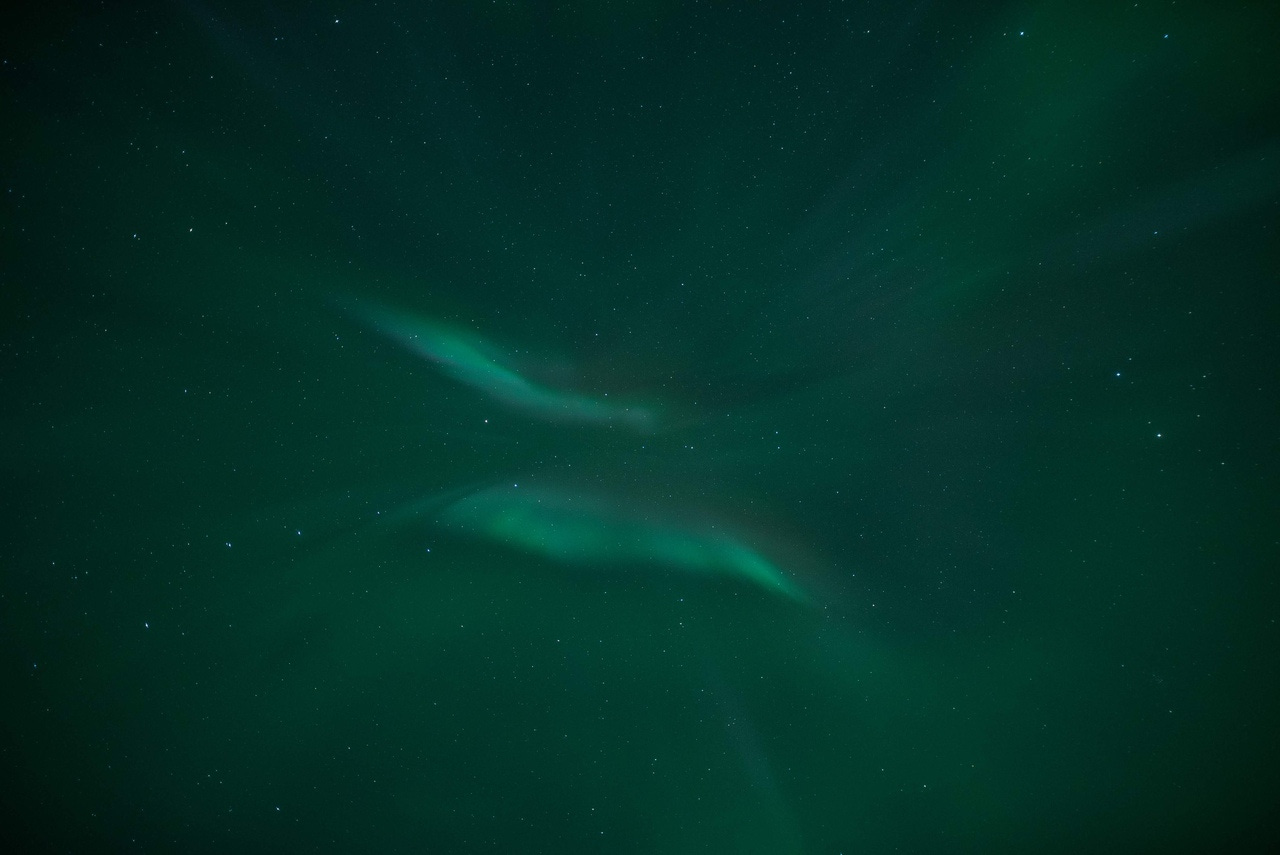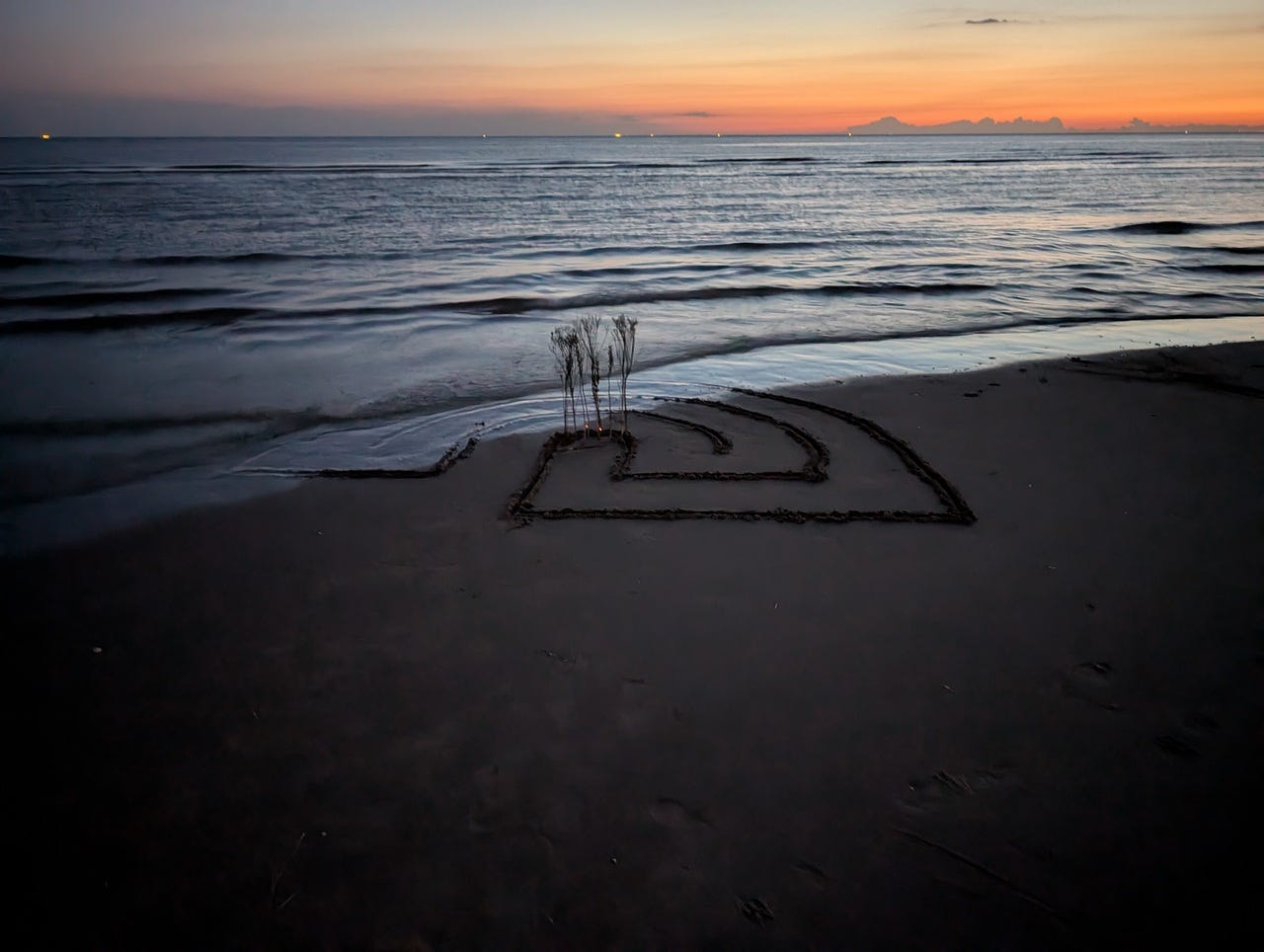There’s one story of the labyrinth that casts a deep shadow over all others. A sword-wielding hero with an unwinding thread journeys to the dark heart of a prison maze where he slays a monster hungry for human flesh.
But perhaps we shouldn’t believe everything we’re told.
In ancient times, as today, the labyrinth’s path was simple and unbroken. The myth’s supposed hero was a callous young man in search of glory at any cost. And his victim, hidden away from sight in a sanctuary, was not the monstrous minotaur, but a divine wild child, born of his mother’s devotion to her gods and named after his beloved grandfather, Asterion.
Stripped of its bloodied mythology, the labyrinth becomes a place of potent magic. It offers a journey of transformation, not terror. Of curiosity, not conquest.
The labyrinth invites us to put down our swords and shields, to let go of our impulses to attack or defend, and simply let things be what they are. In the labyrinth, we tread an ancient path of ritual transformation. We journey to its centre not to meet a monster, but to find ourselves.
Crossing the threshold
There is a narrowing that marks the labyrinth’s entrance. The continuous sweep of the outer edge turns inward to border the path that leads towards the centre. Approaching, I am beckoned by this sinuous, sensuous geometry.
With no line in the sand to step over, the exact moment of threshold-crossing is unclear. But as I inch forward, I sense my choices shifting. A few footsteps ago, I could have turned away. Now, I can only turn back.
Yet a labyrinth has no true inside or outside. The boundary line that guided me to the threshold was only the furthest edge of the winding path. Untwist a labyrinth, bend and reshape its form, and it is simply a single line through space carrying me from one place to another.
So how does the labyrinth enfold me in its magic? I believe the labyrinth is not made in the drawing of lines or the building of walls. It emerges in the animate power of the path itself. The way through the labyrinth is alive with its own intentions and agency. I go wherever it takes me.
The path leads; I simply follow.
But I am not trapped. All the time, I have choices. The space between one stretch of path and its neighbour is not a wall, but an emptiness in the field of labyrinth’s form. I can step across. The path is not a constraint, but an invitation to a deeper freedom.
There is nothing to stop me ignoring the path entirely and walking directly to the centre. Instead, I choose to trust the labyrinth’s wisdom. Every turn offers a shift in perspective. My first steps take me so close to the centre, but then cast me out to the farthest reaches. My urge to take the most direct route is confounded by the path’s paradoxical winding.
The longest unturning section of the path tracks the labyrinth’s outer edge. Yet just as my feet will carry me no further, I journey inward.
Standing in starlight
The centre of the labyrinth is simply the end of the path. I can go no further. There is no way forward but back.
For the starry-eyed child, Asterion, alone in his labyrinth, this dead end was home. With no memory of a world beyond the threshold, all he saw beyond this still point was shadow. Twisting corridors. Darkness. Even though he longed for his mother’s tenderness and the kindness of companions, I can sense why he stayed here.
There was safety in his solitude. This quiet sanctuary was his whole world.
His presence lingers here. As I pause and gaze upwards at the starry sky, Asterion plays in the shadows. Eager for company, he invites the vulnerable, wounded, abandoned selves I carry quietly in my soul to play with him.
The scared, the sacred; this is their place, too.
The walk to the centre of the labyrinth is a journey of personal reconciliation. Passing through the shifting threshold and travelling through the liminal space, the path’s gentle unwinding readies me. At last, I welcome those parts of myself, wild and divine, that were lost to chaos and compromise. In Asterion’s home, I return to myself, in all my complexity and wholeness.
I am safe in the sanctuary of starlight.
Enchanting the everyday
The centre of the labyrinth may be Asterion’s home, but it is not my own. Eventually, I sense it is time to return.
To the medieval mind, a labyrinth was a microcosmic pilgrimage. Contemporary pilgrims may hop on a plane from their final destination, but for countless generations before, the slow retreading of the pilgrim’s return was an essential opportunity to reflect and integrate their experiences. A homeward-bound pilgrim was changed by their walking.
So it is with the labyrinth. The path may not turn back, but I do. From this point on, I am walking in the echo of my own footsteps. Often, I find, the walk from the centre is more powerful than my initial steps. Opening myself to the possibilities of the centre’s stillness gives me a renewed vision that I carry with me as I journey home.
Eventually, I reach the place where the path once again widens, and I sense the transition back into the everyday. I have a choice. Will I forget? Or will I remember?
I choose to carry the spirit of the labyrinth with me. Every step I take beyond the winding path can be filled with wonder and the rich possibilities of encounter. Even if my labyrinth dissolves with the incoming tide, the footsteps I have taken make tracks across my heart.
Enchanting the everyday requires a shift in perspective, and it can be hard to hold on to the insight that labyrinth walking brings. I think this is OK. Whether I walk a public labyrinth, draw a shape on the sand or trace the lines of the labyrinth’s path with my finger, this journey is always open to me.
But I’ve learned that the transformative potential of the labyrinth persists long after my walk is done. Encountering the mystery at its heart expands my capacity to see the world through starry eyes.
And the physical act of walking the path creates a new story of sanctuary, wholeness and the wonder of a divine wild child.







Beautifully expressed, Dru! I remember that the name of the Minotaur was Asterion, but never heard the version that this myth was a metaphor for the Divine Wild Child. I love what you did with this. Labyrinths are definitely Magic and your writing has definitely brought us to that Magic!
What a sublime piece of writing!